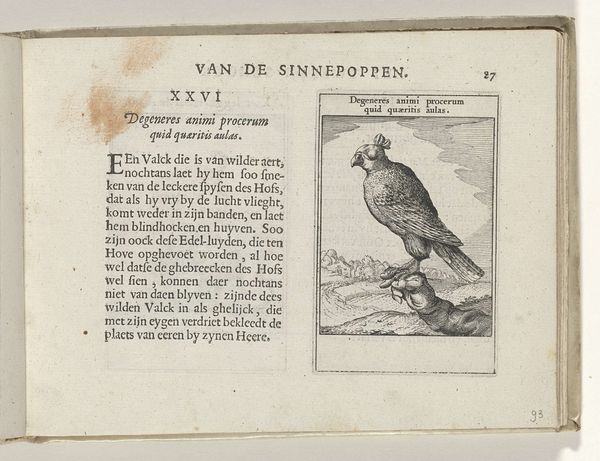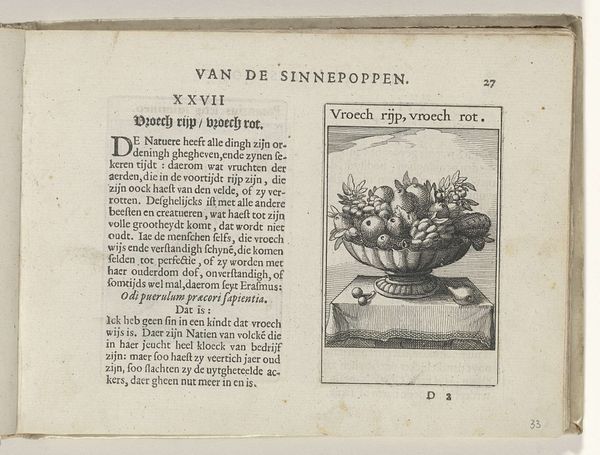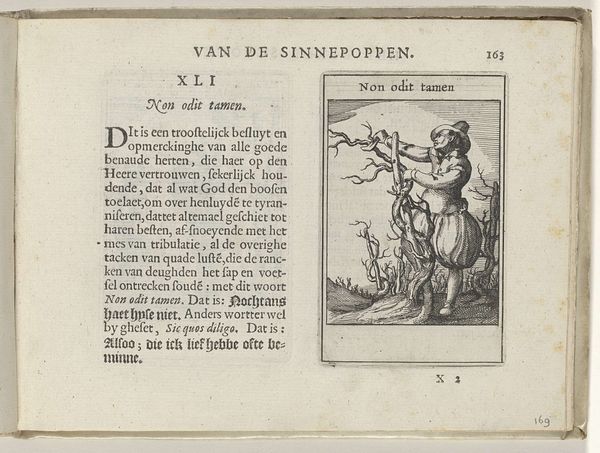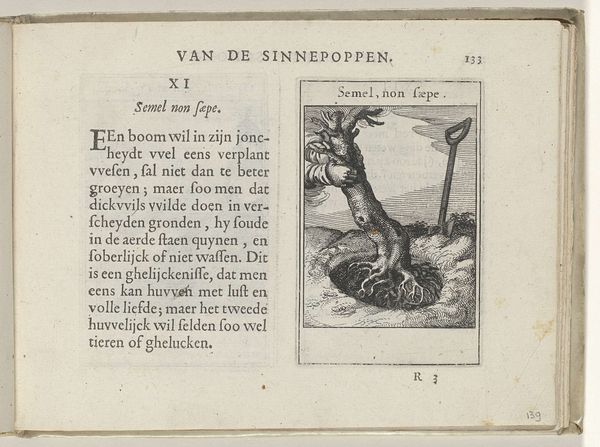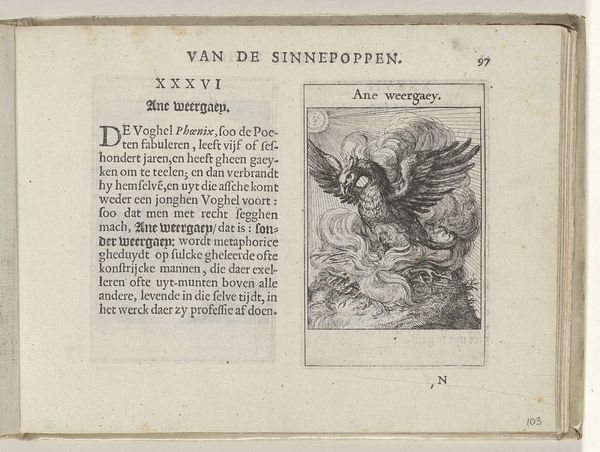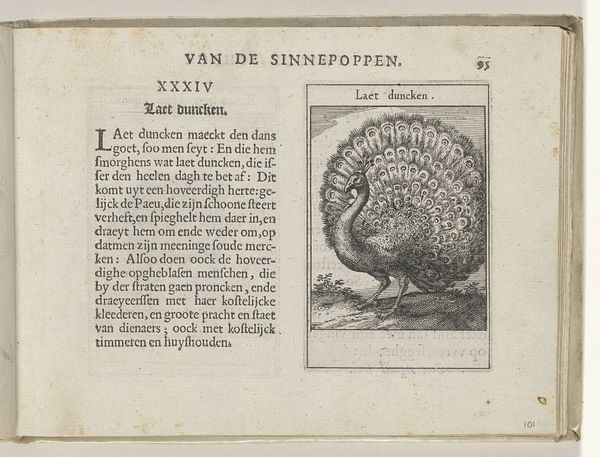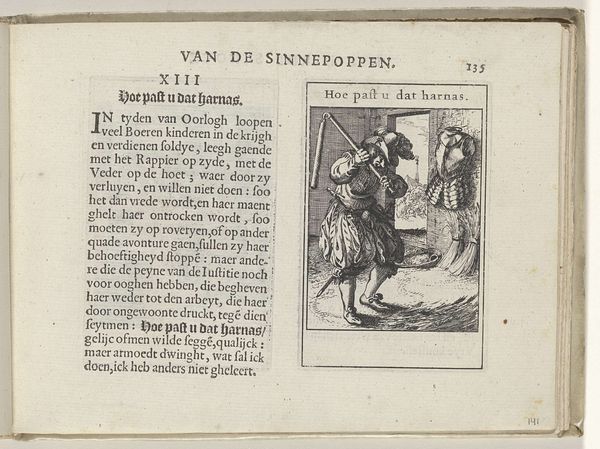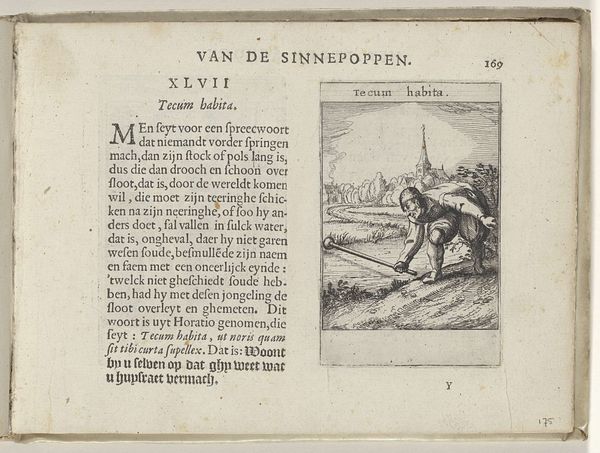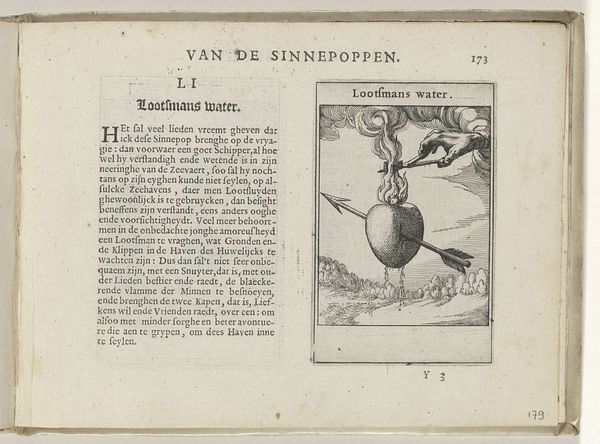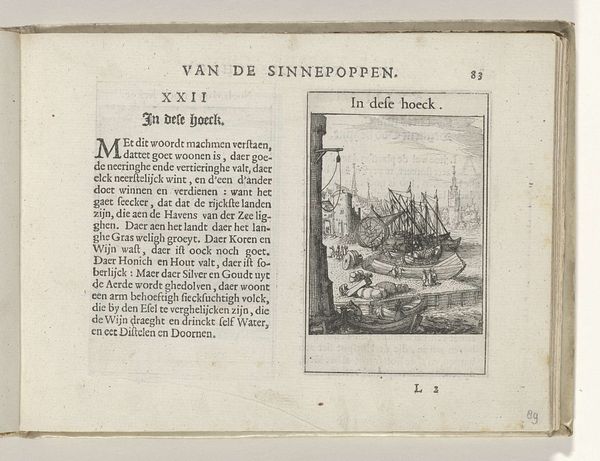
print, paper, ink, woodcut, engraving
#
dutch-golden-age
# print
#
landscape
#
figuration
#
paper
#
ink
#
woodcut
#
genre-painting
#
engraving
Dimensions: height 137 mm, width 188 mm, height 95 mm, width 60 mm
Copyright: Rijks Museum: Open Domain
Curator: Isn't it amazing how a simple image can hold so much depth? This woodcut and engraving, created with ink on paper, comes to us from Roemer Visscher around 1614. It's called "XVIII Oolijck, maer vrolijck," which I understand to mean "Seemingly Simple, but Merry." What catches your eye first? Editor: Immediately, I notice the bird—a nightingale, it seems, perched so serenely on that branch. There's a real sense of tranquility, a gentle observation of the natural world. But something tells me there's more to it than just pretty plumage. Curator: Absolutely! Visscher, part of the Dutch Golden Age, used these prints as emblems, visual metaphors accompanied by moralizing texts. In this case, the bird illustrates the concept of finding joy in simplicity. He lived during a period of enormous economic and social change in the Netherlands. It's also significant that books with emblems were a luxury at that time and for privileged elites. Editor: Ah, context is everything! So, this seemingly innocuous scene carries a message of contentment amid the rising tide of materialism. The text, juxtaposed with the image, subtly critiques those consumed by ambition and envy. It’s interesting to note that such a statement existed for elites, who didn't necessarily have to labor to the extent that most common people did. It does beg the question of whether it could be viewed as satire. Curator: Precisely. The nightingale, "lightly dressed in its little feathers" in the words of the adjacent text, contrasts sharply with the swan who "lazily lies on the water, watched and envied by many". The bird represents a kind of freedom, one divorced from material concerns, capable of being joyful with less. It is such a beautiful composition with such carefully rendered light and shadows! The artist even uses varied strokes to suggest the textures of feathers, wood, and foliage. Editor: I appreciate how it connects to today. The woodcut makes me reflect on what society truly values. Are we like that little bird, finding joy in the simple things? Or are we caught in the trap of endless acquisition, forever chasing after that next shiny object? It also feels like a reminder that the things that bring us true joy are often free. Curator: You've nailed it. Visscher's artwork is very cleverly thought out. What seems like a gentle nature scene acts as a very sharp social commentary on consumption. Editor: I agree. This makes it worth spending a bit of time thinking about—far more than it initially suggests!
Comments
No comments
Be the first to comment and join the conversation on the ultimate creative platform.
